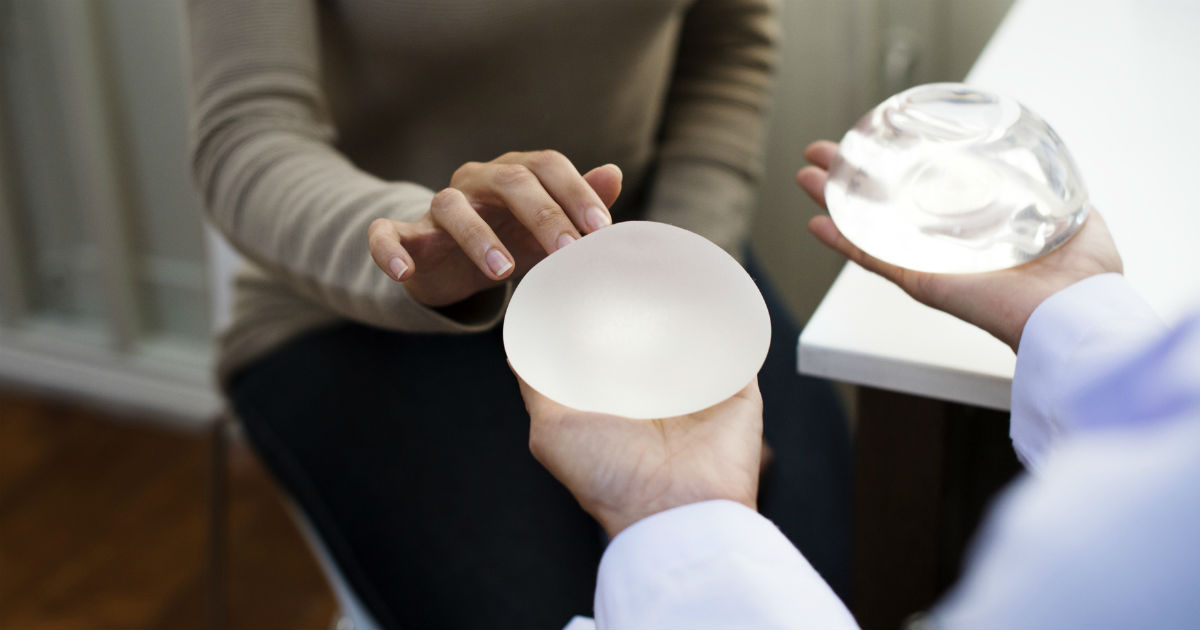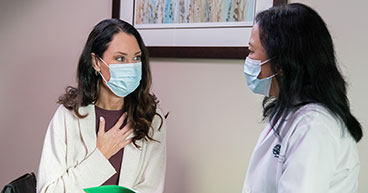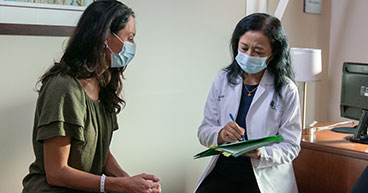
If you’ve had, or are scheduled to have, surgery as part of your breast cancer treatment, breast reconstruction may be an option to consider. But in order to make a decision about breast reconstruction, you need to know your options. A 2017 survey by the American Society of Plastic Surgeons (ASPS) show many women don’t, estimating 23 percent know what breast reconstruction options are available to them.
Along with deciding whether to have the surgery and what type of reconstruction you should have, there’s also the question of timing. Do you have the procedure immediately following breast cancer surgery or delay the procedure to a later date? The same ASPS study also shows that 19 percent of women do not understand the pros and cons of the timing of their reconstructive surgery.
Further, some women choose to forgo reconstructive surgery in favor of non-surgical reconstruction options. A discussion with your health care team can help you decide on the best option for your individual needs.
The pros and cons of implants
Breast cancer reconstruction surgery options are broken down into two main categories:
- Alloplastic, which uses some type of implant, usually saline or silicone
- Autologous, which is reconstruction done using a woman’s own tissue
“Alloplastic reconstruction with implants remains the most common option to this day,” Frederick Durden Jr., MD, a Plastic and Reconstructive Surgeon at Cancer Treatment Centers of America® (CTCA), Atlanta. “It limits the operation to the breast site and doesn’t require surgery outside of that. It can also be the shorter surgery in terms of the surgery itself as well as time to recover.”
A potential downside of implants, Dr. Durden says, is that they’re typically not permanent. “It’s important to understand that any type of implant typically will need to be replaced eventually, due to the potential compromise of the implant and changes in the soft tissue at the breast,” he says.
In addition, for women with a larger body type, implants may not always be the best option. “There are size restrictions, so for larger volume, there may not be a large enough option for the profile they wish to receive,” Dr. Durden says.
Implants may not be the best option for women who have had certain infections or radiation treatment. Radiation therapy may increase the risks of complication with implant-based reconstruction. Also, research is still ongoing in determining the relationship between silicone implants and a rare type of lymphoma. In 2017, the U.S Food and Drug Administration estimated that one case of breast implant-associated anaplastic large cell lymphoma (BIA-ALCA) developed for every 30,000 implants placed. Fewer than 600 cases of BIA-ALCL have been reported worldwide, and about 450 of those are linked to the implants.
Using your body’s own tissue
With autologous reconstruction, the breast is recreated using tissue taken from another area of your body, such as your abdomen, back, buttock or thigh. Because it involves your own tissue, there are no implant-related complications, and there’s no planned removal. “It’s a part of you,” Dr. Durden says, adding that you can achieve larger volumes with this type of reconstruction, often making it a better choice for women with a larger body size.
In addition, if you’ve had radiation treatment, autologous reconstruction can help to replace lost tissue with healthy tissue, and it’s typically a good choice for women who can’t have, or don’t want, implants.
However, this procedure requires an incision in another part of your body beyond your breast, which has the potential for scarring and increased complications, especially in the abdomen region. The recovery time may also be longer.
Dr. Durden tells his patients that, in general, recovery takes two to three weeks for implant-based reconstruction (before you’re doing semi-normal things like going out to eat) compared to six to eight weeks for autologous reconstruction. “Often people recover faster than that,” he says, “but it’s a good range for planning purposes, just in case.”
What is oncoplastic reconstruction?
Oncoplastic reconstruction methods are used to preserve as much breast tissue and skin as possible to reduce scarring and deformities and allow for reconstruction using remaining breast tissue and skin. Talk to your physician about oncoplastic reconstruction prior to breast cancer treatment. This option would allow your reconstructive plastic surgeon and surgical oncologist to work together to remove the cancer while preserving or rebuilding your breast. Additional types of skin-sparing mastectomies help to preserve the shape of the breast—a nipple-sparing mastectomy instead of a traditional mastectomy, for example. Patients with these types of resections can consider either alloplastic or autologous reconstruction.
If your nipple is removed, surgical restoration is sometimes available, as are 3-D nipple tattoos, which can add a natural and realistic look to a reconstructed breast. By working together, your plastic surgeon and surgical oncologist may develop an individualized breast reconstruction plan that corresponds with your overall treatment and personal goals.
Reconstruction now, later or never
You may have a choice of whether to have breast reconstruction at the same time as your breast cancer surgery, or wait until a later date. “Limiting surgery to one occasion when possible is better for the patient,” Dr. Durden says. “There are fewer risks from anesthesia and a shorter recovery time. So immediate reconstruction is better in terms of limiting the number of surgeries.” However, immediate reconstruction isn’t always an option, depending on the treatment plan after surgery and the condition of the breast skin after mastectomy. If there are possible plans for radiation, or compromised breast skin after mastectomy, then delayed reconstruction may be a better choice.
If you’d rather not have another surgery but are interested in augmenting the shape of your breast, there are a number of prosthetic options available that can be molded into undergarments, such as bras, to help give you a more symmetrical appearance.
“I consider prostheses to be part of reconstruction,” Dr. Durden says, “and they’re an excellent option for patients who don’t want surgery.” Some women opt for no reconstruction—surgical or prostheses—at all.
Which option is best for you? A 2015 study on breast cancer reconstruction options concluded that while more women were satisfied with their autologous surgery, there is “no ideal breast reconstruction suitable for all patients.”


